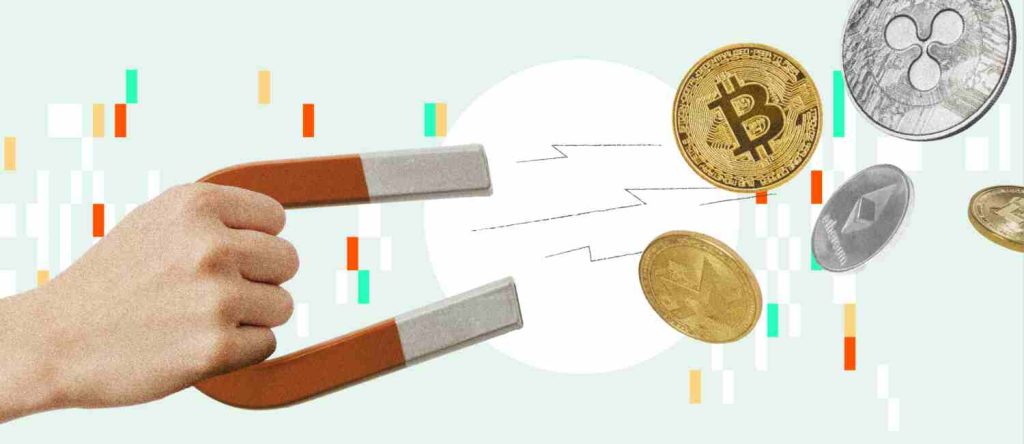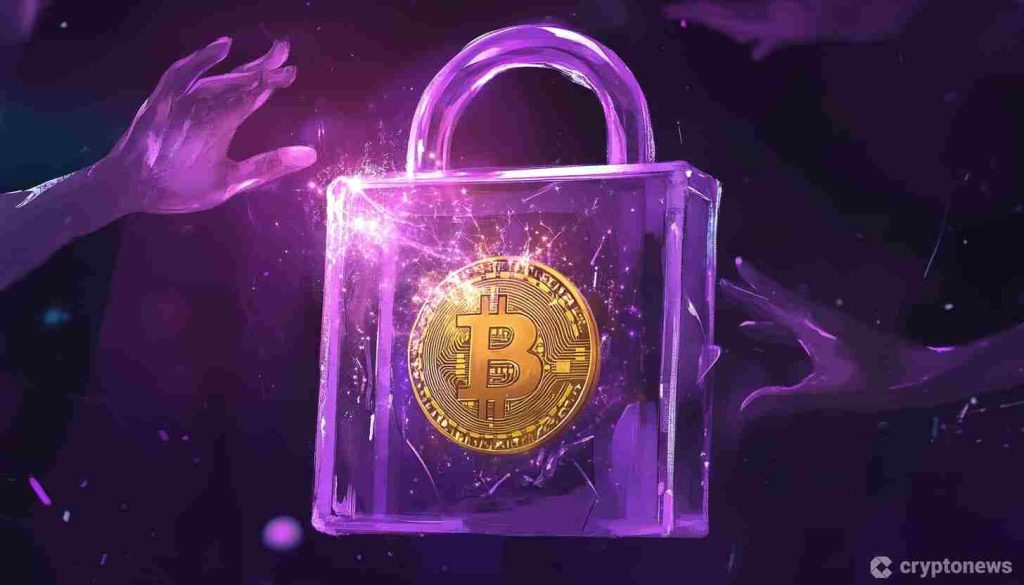Table of Contents
ToggleSteps to Recover Your Stolen Cryptocurrency

Steps to Recover Your Stolen Cryptocurrency
How to Recover Stolen Cryptocurrency: Cryptocurrency theft is becoming a bigger problem. As digital money becomes more popular, the chance of it being stolen increases.
If you’ve fallen victim to such a crime, you might feel helpless. The decentralized nature of cryptocurrencies can make recovery seem impossible.
But don’t lose hope just yet.
This guide will walk you through the steps to recover your stolen cryptocurrency.
It will give you clear steps to take right after the theft. You will learn how to find your stolen items and how to get compensation.
This guide is for you if your cryptocurrency has been stolen. It is also for those who use a digital wallet and want to keep their assets safe.
Let’s look at how to get back your stolen cryptocurrency and how to keep your digital assets safe in the future.
Immediate Actions Post-Theft
The moment you realize your cryptocurrency is stolen, act swiftly. Your first steps can increase the chances of recovery.
Begin by confirming the theft. Verify all transactions and check if unauthorized ones are present.
Once confirmed, secure other digital accounts linked to your finances.
Please change your passwords and turn on two-factor authentication right away.
Create a log of all events leading up to and following the theft. This documentation will be crucial for law enforcement and recovery services.
Here’s a quick checklist to follow:
- Confirm and document unauthorized transactions.
- Secure other linked digital accounts.
- Change passwords and enable two-factor authentication.
- Collect evidence and transaction details.
- Report the theft to relevant platforms immediately.
Following these actions will help you safeguard remaining assets and build a solid foundation for recovery efforts. The key is to remain calm and act efficiently.
Securing Your Remaining Assets
After a theft, securing your remaining cryptocurrency is vital. This minimizes potential further losses and locks down your assets.
Start by moving your funds to a more secure environment. A cold storage wallet is often recommended for its high security level.
Enhance your digital defenses. Ensure all devices are free from malware and have updated antivirus protection.
Do not overlook strong passwords. Use a combination of upper and lowercase letters, numbers, and special characters.
Implement multi-factor authentication on all accounts. This adds an extra layer of defense against unauthorized access attempts.
Utilizing Blockchain Analysis Tools
Blockchain analysis tools can play a crucial role in tracking stolen cryptocurrency. These tools help follow the digital trail left by the thief.
By tracing transaction IDs, you can pinpoint where the stolen funds have been moved. This provides valuable insights for recovery efforts.
Some platforms offer sophisticated tracking solutions. These solutions specialize in navigating the blockchain to identify suspicious activities and patterns.
It’s wise to seek expert assistance when using these tools. Skilled professionals can interpret the data more effectively and enhance the chances of recovering your assets.
Contacting Exchanges and Wallet Providers
Crypto Recovery Services:
Once you’ve detected the theft, promptly contact exchanges where the cryptocurrency might have been transferred. Exchanges may help freeze accounts, preventing further unauthorized transactions.
Provide them with detailed information about the stolen funds. Include transaction IDs and relevant documentation to bolster your case.
Additionally, notify your wallet provider about the theft. They might offer specific guidance or security updates to minimize additional risks.
Being proactive in contacting these entities can accelerate the recovery process. Quick action can reduce the chance of the thief successfully laundering or withdrawing your assets.
Reporting to Law Enforcement
After securing your remaining assets, it’s crucial to report the theft to law enforcement agencies. They possess the authority and tools to initiate a formal investigation.
Begin by documenting all relevant details regarding the theft. This includes transaction IDs, wallet addresses, and any suspicious activity logs.
Consider reporting the theft to specialized agencies, like the FBI’s Internet Crime Complaint Center (IC3). They are equipped to handle cybercrimes, including cryptocurrency theft.
Timely reporting increases the likelihood of a successful investigation. W
While recovery is not certain, working with law enforcement can make your case stronger and put more pressure on it.
Exploring Cryptocurrency Recovery Services
How to Recover Stolen Cryptocurrency From Trust Wallet: Cryptocurrency recovery services can offer specialized assistance. These services employ skilled professionals who understand digital asset recovery.
Before engaging a recovery service, research their reputation thoroughly. Look for credible reviews and past success stories to avoid scams.
How Do I Recover My Stolen Cryptocurrency: Certain services use advanced tools and methods to track stolen funds. However, their success rates vary greatly, so manage your expectations.
Be prepared for costs associated with hiring these services. Compare fees and services offered to ensure you’re making a wise investment in your recovery efforts.
Legal Avenues for Recovery
Engaging with legal avenues can provide another route to recover stolen cryptocurrency. While challenging, legal actions may deter future thefts and provide restitution.
Consult with attorneys experienced in digital currencies. They can advise on potential lawsuits or negotiations with exchanges and wallet providers.
Filing a report with the FBI’s Internet Crime Complaint Center (IC3) is vital. This adds legitimacy and may spur international cooperation in your case.
Knowing about jurisdiction is very important.
Cryptocurrency laws vary worldwide, so you must navigate these complexities with expert guidance.
Preventative Measures for the Future
Once you’ve dealt with the immediate crisis, focus on preventing future theft. Strengthen your security measures to safeguard your digital assets.
Begin by changing passwords. Ensure they are strong, unique, and updated regularly. Enable two-factor authentication on all accounts.
Regularly update your software and wallet applications. Keeping them current minimizes vulnerabilities and enhances security.
Consider the following preventative actions:
- Use cold storage wallets for long-term holdings.
- Stay informed about emerging security threats and scams.
- Educate yourself about safe cryptocurrency practices.
Being proactive is key. Consistently monitor your accounts for unusual activity and remain vigilant to potential threats.
Conclusion and Support Resources
Recovering stolen cryptocurrency is challenging but not impossible. By taking immediate action and utilizing available resources, you can increase the chances of retrieval.
Seek guidance from trusted sources and the cryptocurrency community. Forums and groups often provide valuable insights and emotional support. Connecting with others who have faced similar situations can be reassuring.
Remember to focus on long-term security improvements. Learning from the experience will strengthen your defenses. Always prioritize asset protection and consider professional advice when necessary. By remaining informed and vigilant, you safeguard your digital wealth for the future.

How Do I Recover My Stolen Cryptocurrency
How Do I Recover My Stolen Cryptocurrency
Cryptocurrency theft is a growing concern. As digital currencies gain popularity, so does the risk of theft.
But what happens when your cryptocurrency is stolen? Is there a way to recover it?
This guide aims to answer these questions. It provides a comprehensive overview of the steps you can take to recover stolen cryptocurrency.
We’ll explore immediate actions, reporting theft, and the role of blockchain analysis. We’ll also discuss contacting exchanges and wallet services, legal avenues, and the role of the crypto community.
Understanding the limitations and enhancing security post-theft will also be covered. This guide is designed to help you navigate the complex process of recovering stolen cryptocurrency.
Immediate Actions to Take
Discovering your cryptocurrency has been stolen can be alarming. Immediate action can significantly impact recovery chances. Act quickly to mitigate the damage.
The first step is to secure your remaining assets. Move unaffected funds to a secure wallet. Ideally, choose a wallet with enhanced security features.
Next, document every detail related to the theft. This includes transaction IDs, wallet addresses, and timestamps. This information will be vital for tracking and reporting.
Important Steps to Take Immediately:
Secure remaining funds in a safe wallet.
Document all relevant theft details.
Contact your crypto wallet provider.
After securing and documenting, reach out to your wallet provider. Inform them about the theft. They may have protocols or advice specific to their platform.
Timeliness in these actions is critical. The sooner you act, the better the chances of recovery. Every second matters in the fast-paced world of cryptocurrency.
Reporting the Theft
Reporting the theft to law enforcement is crucial. This helps in creating an official record of the incident. It also lends credibility to your claim if you pursue legal action.
Not all jurisdictions have clear policies on cryptocurrency theft. However, filing a report is still beneficial. It might trigger investigations or future policy developments.
Provide law enforcement with all documented evidence. This includes transaction records and communications. Detailed reports improve the chances of a successful investigation.
Aside from law enforcement, report the theft to relevant regulatory bodies. Authorities may track and monitor suspicious transactions across networks. These bodies can sometimes freeze the stolen assets.
Utilizing Blockchain Analysis
Blockchain analysis plays a pivotal role in tracking stolen cryptocurrency. These tools help trace the movement of stolen funds across the blockchain. By identifying patterns, it’s easier to locate the destination of stolen assets.
Hiring a specialized blockchain analysis firm can be advantageous. These firms possess the expertise and tools for in-depth analysis. Their insights can pinpoint where your cryptocurrency has traveled or is currently located.
Many blockchain platforms offer built-in tracking features. These can help flag suspicious transactions and potential thefts. Regularly monitoring these alerts helps in spotting unusual activities early on.
Despite the anonymity of cryptocurrency, blockchain records every transaction. This transparency offers a glimmer of hope for recovery. With detailed records, authorities and victims have a better chance of tracking the assets.
Contacting Exchanges and Wallet Services
Reaching out to cryptocurrency exchanges and wallet providers is crucial. They may have procedures in place to help recover stolen funds. Prompt communication can increase the likelihood of freezing or retrieving your assets.
Provide exchanges with detailed evidence of the theft. Include transaction IDs, wallet addresses, and any correspondence related to the breach. This data assists them in identifying and potentially halting suspicious transactions.
Exchanges often have dedicated teams for handling security issues. These teams work closely with law enforcement and blockchain experts. Their collaboration is key to investigating and potentially reclaiming lost cryptocurrency.
However, not all exchanges and wallets offer the same level of support. It’s essential to choose platforms known for robust security measures. Opt for those with a strong track record in dealing with theft and fraud cases.
Legal Avenues for Recovery
How to Recover Stolen Cryptocurrency
Exploring legal options is vital for victims of cryptocurrency theft. Many jurisdictions now recognize digital assets as property. This recognition opens doors for seeking legal recourse through civil or criminal courts.
Consult a lawyer familiar with cryptocurrency laws. They can advise on the steps to take and the chances of success. A legal professional will guide you through the complex web of international and domestic regulations.
Consider filing a police report if you haven’t already. This report can be a critical piece of evidence in any legal proceedings. It demonstrates that you took immediate action after discovering the theft.
Legal channels can be challenging and costly. However, if your stolen cryptocurrency is substantial, the pursuit may be worthwhile. Always weigh the potential recovery against the expenses involved in litigation before proceeding.
The Role of the Crypto Community
The crypto community is a powerful ally in the fight against cryptocurrency theft. Many victims find support and advice from fellow enthusiasts who have faced similar experiences. Online forums and social media platforms provide spaces for sharing stories and insights.
Community members often share useful information about tracking and recovering stolen assets. Experienced users might offer guidance on using blockchain analysis tools and reporting suspicious activities. This collective knowledge can be invaluable for those unfamiliar with complex cryptocurrency systems.
Some platforms maintain watchlists of stolen cryptocurrency. Alerting these communities can help flag your stolen assets, discouraging potential buyers. This collective vigilance can slow down the movement of stolen funds, enhancing the chances of recovery.
Reaching out to community watchdogs and influencers can amplify your situation. They may offer to spread awareness and sometimes even direct contact with influential figures in the crypto world. Engaging with the community can also provide emotional support during challenging times.
Enhancing Security Post-Theft
Experiencing a cryptocurrency theft serves as a wake-up call for bolstering your security measures. It’s vital to reassess and enhance your digital wallet defenses after such an event. Implementing advanced security features can prevent future losses.
Begin by updating and securing passwords across your cryptocurrency accounts. Use a password manager for generating and storing strong, unique passwords. Enabling two-factor authentication (2FA) adds an extra layer of protection against unauthorized access.
Consider transitioning to a hardware wallet for added security. These devices store your private keys offline, safeguarding them from online threats. Cold storage solutions further enhance security by isolating your assets from the internet.
Regularly audit your security practices and stay informed about the latest threats and technologies. Monitor for updates or patches for any software wallets in use. Educating yourself about new security measures and technologies can keep you ahead of potential risks.
Understanding the Limitations
Recovering stolen cryptocurrency presents significant challenges. It’s essential to understand the limitations involved in the process. While the blockchain’s transparency aids in tracking, it does not guarantee recovery.
The decentralized nature of cryptocurrencies often complicates legal recourse. Unlike traditional banks, cryptocurrencies lack a central authority to reverse transactions. This can hinder legal efforts in reclaiming lost assets.
Recovery services exist but do not ensure success. These services depend on the timely detection and reporting of theft. Delays might lessen their effectiveness as cybercriminals can quickly move funds across multiple wallets.
Additionally, international cooperation can be slow and complicated. Different jurisdictions may have varied regulations and protocols. Navigating these legal landscapes requires patience and tenacity.
Conclusion and Preventative Measures
In the wake of cryptocurrency theft, recovery is challenging but not impossible. Taking quick and informed actions can improve the odds of recovering assets. Reporting to authorities and using blockchain analysis are crucial steps.
To prevent future theft, enhance your security measures comprehensively. Implement two-factor authentication and use strong, unique passwords. Consider multi-signature wallets for added security.
Regular updates to your software and hardware wallets are vital. Stay informed about the latest threats and security trends in the cryptocurrency space. Maintaining vigilance and caution is key to safeguarding your digital assets.
Finally, prepare a detailed recovery plan before investing further. This proactive approach can help mitigate losses from potential future thefts. Such steps not only protect assets but also increase overall peace of mind.

How to Recover Stolen Cryptocurrency From Trust Wallet
How to Recover Stolen Cryptocurrency From Trust Wallet
Cryptocurrency theft is a growing concern. As digital assets gain popularity, they become a lucrative target for cybercriminals.
Trust Wallet, a widely used crypto wallet, is not immune to these threats. Users may find their assets stolen due to various security breaches.
But what happens when your cryptocurrency is stolen from your Trust Wallet? Is there a way to recover these digital assets?
This guide aims to answer these questions. It provides a comprehensive overview of the steps to take when you discover a theft.
We’ll delve into immediate actions, from securing your remaining assets to tracking unauthorized transactions. We’ll also discuss reporting the theft to Trust Wallet support and law enforcement.
The guide explores potential recovery options. These include crypto asset recovery services, blockchain analysis, and legal avenues.
We’ll also emphasize the importance of prevention. By implementing strong security measures and conducting regular audits, you can protect your assets.
Finally, we’ll highlight the role of the community and support networks. They can provide invaluable help in these challenging situations.
Understanding the Threat: The Rise of Cryptocurrency Theft
Cryptocurrency theft has become a significant concern in today’s digital world. The rise in the value and use of cryptocurrencies has attracted many cybercriminals. They employ sophisticated techniques to access users’ wallets.
Trust Wallet, known for its user-friendly interface and security, is still at risk. Hackers often exploit weak security practices, such as simple passwords or unsecured networks. With millions of Trust Wallet users worldwide, the threat continues to grow.
Hackers often use phishing attacks, malware, and other deceptive tactics. Phishing scams trick users into revealing their recovery phrases or keys. Meanwhile, malware can infiltrate devices and compromise wallet security.
The decentralized nature of blockchain, while offering anonymity and freedom, also poses challenges. Once cryptocurrency is stolen, tracing and recovering it becomes difficult. This is because transactions on blockchain are irreversible and pseudonymous.
Understanding the threat landscape is vital to safeguarding your assets. Users must remain vigilant and informed about these evolving threats. By recognizing common attack vectors, you can better prepare and protect your cryptocurrencies.
Immediate Actions: What to Do When Your Crypto is Stolen
Discovering that your cryptocurrency has been stolen is distressing. Acting quickly can prevent further losses and increase recovery chances. Here’s what you should do immediately.
First, assess the situation and check for other compromised assets. Time is crucial in minimizing potential damage. Make sure to evaluate each account linked to your Trust Wallet.
Consider changing passwords and increasing security features. Adjust security settings on all affected platforms. This will help protect your remaining cryptocurrency.
You should document every detail regarding the theft as evidence. Take note of dates, account activity, and emails received. These details could be valuable in future recovery attempts.
Several steps are crucial in responding to a theft:
Secure your remaining assets.
Track unauthorized transactions.
Report the theft to Trust Wallet and authorities.
Don’t lose hope. While recovering stolen cryptocurrency is challenging, various measures can help. Engaging promptly with these actions will bolster your chances of safeguarding your digital assets.
Step 1: Secure Your Remaining Assets
Upon noticing theft, focus on securing any unaffected assets. Quick action is essential to prevent more losses. Ensure all other accounts and wallets remain uncompromised.
Begin by updating all passwords to strong, unique combinations. Utilize two-factor authentication for added security. This will block unauthorized access to your funds.
Revoke any permissions or connections to suspicious apps. These apps might have contributed to the vulnerability. Be cautious when reconnecting services to your Trust Wallet.
Take a moment to back up your Trust Wallet recovery phrase securely. Store it in a safe place, away from digital or online threats. This action will help safeguard your assets in case of future breaches.
Step 2: Track the Unauthorized Transactions
Tracking unauthorized transactions can be a daunting task. Start by reviewing your Trust Wallet transaction history. Look for unknown or suspicious activities that indicate theft.
Utilize blockchain explorers to investigate transaction details. These tools can provide insight into where your stolen crypto went. By tracing these transactions, you might gather crucial evidence.
Note down all relevant transaction IDs and account addresses. This information could be helpful when reporting the theft. It’s also vital for any future legal or recovery actions.
Though complex, using blockchain analysis helps track stolen funds. You might notice patterns or identify potential recovery opportunities. Engaging professional services can enhance the efficacy of tracking.
Step 3: Report the Theft to Trust Wallet and Authorities
After securing your assets, report the theft promptly. Contact Trust Wallet support to inform them about the incident. Provide them with all documented evidence and transaction details.
Reporting to local law enforcement is also crucial. They may not always retrieve assets, but they record the crime. This step helps create a legal trail, valuable for further actions.
In some jurisdictions, online crime units specialize in cryptocurrency theft. Reach out to them for guidance and assistance. Their expertise could be instrumental in navigating the complexities of such cases.
Persistence is key when working with these entities. Stay in consistent contact and follow up on developments. This proactive approach ensures authorities prioritize your case and helps build a strong response.
Exploring Recovery Options: Can You Get Your Stolen Crypto Back?
Recovering stolen cryptocurrency can be challenging but not impossible. The decentralized nature of cryptocurrencies adds complexity to recovery efforts. However, several potential avenues could assist in this daunting process.
One of the first steps is to leverage the power of technology. Blockchain technology, while complex, also provides potential for recovery. Its transparent nature allows for tracking all transactions.
Professional crypto asset recovery services can offer specialized assistance. These firms employ experts who understand the intricacies of blockchain and digital assets. They might help navigate the complexities of tracing and recovering funds.
It’s vital to manage expectations when seeking recovery. Unfortunately, not all stolen assets can be returned. Many factors, including the theft’s sophistication and time elapsed, affect chances of success.
Despite the challenges, persistent effort often leads to better outcomes. Collaborate with experts, leverage technology, and involve legal entities as needed. These multifaceted strategies increase the likelihood of recovering your stolen crypto.
Working with Crypto Asset Recovery Services
Crypto asset recovery services specialize in tracking and retrieving stolen digital assets. These services engage experts versed in blockchain technology and cryptographic methods. They provide customized strategies to address each theft case uniquely.
Partnering with such a service can boost your recovery efforts. They navigate the complexities of blockchain analysis and legal processes. Their expertise might unveil paths unnoticed by the untrained eye.
However, it’s crucial to be discerning when selecting a recovery service. Not all offer genuine services, and scams are prevalent. Conduct thorough research, check credentials, and only engage reputable firms with proven success.
The Role of Blockchain Analysis in Tracing Stolen Funds
Blockchain analysis is crucial in tracing stolen funds. The transparency of blockchain allows detailed transaction tracking. Experts in blockchain analysis can follow the path of your assets across the ledger.
These experts use various tools to analyze and interpret blockchain data. They search for patterns, addresses, and other vital details. This may help pinpoint where your stolen funds have moved.
Utilizing blockchain analysis enhances the information available for recovery. With comprehensive transaction tracking, it becomes easier to gather evidence. This information may be crucial when pursuing legal or recovery actions.
Legal Avenues for Cryptocurrency Theft Victims
Legal avenues may offer recourse for cryptocurrency theft victims. Engaging legal experts who specialize in digital assets is essential. They can help navigate the intricate landscape of crypto laws.
Legal action is often complex, requiring detailed evidence and strategic planning. Lawyers might assist in building a strong case, leveraging blockchain data. They can also liaise with law enforcement and regulatory bodies.
Navigating the legal system requires patience and persistence. Keep communication lines open and document everything meticulously. Though challenging, a legal approach might prove beneficial for victims seeking justice.
Prevention is Better Than Cure: Securing Your Trust Wallet
Taking preventive measures can significantly reduce the risk of cryptocurrency theft. Securing your Trust Wallet is crucial in safeguarding digital assets. Proactive security practices help in creating a robust defense against potential threats.
Begin by understanding the vulnerabilities that exist in the digital landscape. Many breaches occur due to weak security measures and user negligence. By acknowledging these, you can make informed decisions to enhance safety.
Implementing strong security measures is key. Utilize tools and features available within Trust Wallet. Essential steps include setting up two-factor authentication and securing your recovery phrases.
Consider regular security check-ups to assess potential vulnerabilities. Updating wallet applications and keeping them current with the latest security patches is also important. This ensures that you aren’t exposed to known threats.
Lastly, educate yourself on evolving security threats in the crypto space. Being informed allows you to adapt quickly and respond to new challenges. A proactive approach is your best defense against cryptocurrency theft.
Implementing Strong Security Measures
Implementing strong security measures is crucial in protecting your Trust Wallet. Begin by setting up two-factor authentication whenever possible. This adds an additional layer of security to your wallet.
Ensure that you secure your recovery phrases and never share them. These phrases are critical for accessing your wallet in case of device loss. Keep them in a safe place offline, away from prying eyes.
Use unique, strong passwords to protect accounts associated with your Trust Wallet. Consider using a password manager to keep track of complex passwords. Strong passwords significantly increase the difficulty for unauthorized access.
Regular Security Audits and Updates
Regular security audits are an integral part of protecting your crypto assets. Conducting these audits helps identify weak points in your security setup. This allows you to make necessary adjustments and fortify your defenses.
Ensuring that your Trust Wallet is updated is equally important. Updates often address vulnerabilities and enhance security features. Keeping software current minimizes risks associated with outdated applications.
Engage with cybersecurity professionals for detailed security audits if needed. These experts can provide valuable insights into your security posture. Their recommendations can assist in implementing best practices for asset protection.
The Community and Support Networks: Finding Help Online
Connecting with the cryptocurrency community can offer vital support in times of need. Many online forums and groups are dedicated to helping victims of crypto theft. Engaging with these communities provides both advice and moral support.
These networks are often filled with individuals who have faced similar challenges. They can share their experiences and solutions for handling theft. Their insights can be invaluable in forming your recovery strategy.
Social media platforms can also be a source of information and support. Following trusted influencers and security experts keeps you informed of the latest scams and threats. Staying connected helps you remain vigilant and proactive in safeguarding your assets.
Conclusion: Staying Vigilant and Informed
Recovering stolen cryptocurrency can be a challenging and lengthy process. However, staying informed and vigilant is essential to both recover your assets and protect them in the future. By utilizing available resources and support networks, you can enhance your understanding of cryptocurrency security.
Continuous education and awareness are vital in the fast-evolving digital landscape. Regularly updating your knowledge about emerging threats and security practices helps safeguard your investments. Remember, prevention is often the best defense, so remain proactive in your security measures.

Crypto Asset Recovery
Crypto Asset Recovery
Crypto assets are a modern marvel. They’ve revolutionized the way we think about money and financial transactions.
But what happens when these digital assets are lost or stolen?
Enter the world of Crypto Asset Recovery. This field focuses on retrieving lost or stolen cryptocurrency, a task that can be daunting and complex.
In this article, we’ll delve into the intricacies of crypto asset recovery. We’ll explore the common causes of asset loss, the role of recovery services, and the legal challenges involved.
We’ll also share success stories and tips on choosing the right recovery service.
Whether you’re a crypto investor, a legal professional, or just curious about the subject, this guide will provide a comprehensive overview of crypto asset recovery.
Understanding Crypto Asset Recovery
Crypto asset recovery is a crucial service for retrieving lost or stolen digital currencies. This process is essential for individuals and businesses who’ve lost access due to errors or malicious acts.
The recovery process involves specialized techniques tailored to digital currencies’ unique nature. This often requires expertise in blockchain technology and an understanding of digital asset security. With crypto’s rise, the demand for effective recovery methods has surged. Services aim to restore lost assets, providing a lifeline to those in distress. A trusted recovery service becomes an invaluable asset itself in the cryptosphere.
Common Causes of Crypto Asset Loss
Losing crypto assets can happen in several ways, often due to simple human error. Forgetting passwords or misplacing private keys are common mistakes that lead to loss. These keys are vital for accessing and managing cryptocurrency.
Technological failures contribute to crypto asset loss. Hardware malfunctions, like damaged storage devices, can render assets inaccessible. Without proper backups, recovery becomes nearly impossible in such scenarios.
Cyber threats pose a significant risk to crypto asset security. Phishing attacks and malware can deceive users into revealing their information. With heightened sophistication, these threats exploit vulnerabilities, leading to asset loss.
Let’s look at some common causes of crypto asset loss:
- Forgotten passwords or misplaced keys
- Hardware failures
- Cyber threats like phishing and malware
- Sending funds to wrong addresses
- Outdated or unsupported technology
Lack of awareness is another factor that contributes to asset loss. Many users are not fully educated about the security measures needed. Knowledge about common pitfalls and proper protection strategies is vital in safeguarding crypto assets.
The Psychological Impact of Losing Crypto Assets
The emotional toll of losing crypto assets can be significant. Many people experience stress and anxiety after losing access to their digital wealth. This is particularly true for individuals who have invested significant amounts.
Feelings of hopelessness can arise when dealing with inaccessible assets. The financial implications can exacerbate this distress, especially when a substantial portion of one’s investments is lost. Seeking support and remaining informed about recovery options can help mitigate these psychological impacts.
How Crypto Asset Recovery Services Work
Crypto asset recovery services offer specialized solutions to recover lost cryptocurrencies. They start by analyzing the specifics of each case, identifying potential recovery strategies. This initial assessment is crucial in determining the likelihood of success.
The recovery process often involves collaboration with experts skilled in digital forensics. These professionals use cutting-edge tools to trace lost or stolen assets through the blockchain. Forensic analysis is integral in identifying the potential paths to recovery.
Recovery services commonly incorporate multiple strategies. These might include searching for forgotten passwords, accessing private keys, or liaising with exchange platforms. Comprehensive approaches enhance the chances of reclaiming lost assets.
Many services operate on a no-recovery, no-fee basis, providing a degree of security to clients. This approach ensures that clients only pay when successful asset recovery occurs. Payment structures vary, so understanding these terms is vital.
Key considerations when engaging a service include:
- Expertise and reputation in the field.
- Customer reviews and testimonials.
- Transparency in their recovery process.
Choosing a proficient recovery service increases the likelihood of retrieving lost crypto assets.
The Role of Forensic Analysis in Recovery
Forensic analysis plays a critical role in recovering lost or stolen crypto assets. It involves tracing transactions on the blockchain to identify how funds were lost. Expert analysts use specialized tools to examine digital trails and find possible paths for recovery.
This process requires a deep understanding of blockchain technology. Analysts must be adept at identifying patterns and discrepancies. The insights gained can guide recovery efforts, increasing the chance of retrieving missing assets. Forensic analysis offers a robust approach to solving complex asset loss cases.
Legal Challenges in Crypto Asset Recovery
Crypto asset recovery involves navigating a complex legal landscape. Many countries lack clear regulations for digital assets, which complicates recovery efforts. This absence of regulation makes it challenging to resolve disputes over ownership and fraud.
Legal experts often face difficulties in proving ownership of stolen or lost crypto. Blockchain’s pseudonymous nature adds another layer of complexity. This makes it hard to link specific transactions to individuals without ample evidence.
In cross-border cases, legal challenges increase. Variances in international cryptocurrency regulations often hinder recovery attempts. Cooperation between jurisdictions can be essential, but is not always guaranteed. This can prolong the recovery process significantly.
Success Stories: Case Studies of Recovery
Success in crypto asset recovery offers hope and lessons. Many individuals and businesses have reclaimed lost assets thanks to diligent recovery processes. These stories highlight the potential of well-organized efforts and skilled professionals.
One notable case involved recovering millions in stolen Bitcoin. Professionals utilized blockchain analysis tools to track the transactions. Cooperation with law enforcement played a crucial role in the successful outcome.
Another success story involves a business that recovered funds from a phishing attack. Expert recovery services combined technical know-how and legal strategies. This ensured a swift resolution and restoration of the company’s crypto assets.
Choosing the Right Recovery Service: What to Look For
Selecting a reliable recovery service is crucial for successful asset retrieval. It’s important to evaluate services based on specific criteria. Doing so can greatly increase the chances of recovery.
Consider these factors when choosing a recovery service:
- Proven track record and experience
- Transparent recovery processes
- Positive customer feedback and testimonials
Reputable services often have detailed recovery plans tailored to individual needs. They maintain high standards of privacy and security. Conducting thorough research can help prevent costly mistakes and ensure a trustworthy partnership.
Avoiding Scams: Red Flags in Crypto Asset Recovery
Navigating the crypto recovery landscape can be tricky. Unfortunately, scammers prey on vulnerable individuals. Recognizing warning signs is key to protecting your assets.
Be cautious of services that guarantee full recovery. No legitimate service can make such promises. Suspiciously high fees or upfront payments can also be indicators of fraud.
Consider these red flags:
- Guarantees of 100% recovery
- Requests for sensitive information
- Pressures to act immediately
Ensure due diligence before engaging a service. Verify their credentials and seek client testimonials. Protecting your assets begins with informed decisions.
Conclusion: The Future of Crypto Asset Recovery
The future of crypto asset recovery looks promising. Technological advances, like blockchain analytics and AI, are enhancing recovery efficiency. These tools are vital in tracing and retrieving lost assets.
Moreover, increased awareness about crypto security is on the rise. Educational initiatives are helping users adopt best practices. This proactive approach reduces potential losses and enhances recovery outcomes.
As the crypto landscape evolves, so do recovery strategies. Collaborative efforts between exchanges, law enforcement, and recovery services are key. Together, they strengthen the safety net for cryptocurrency users worldwide.






